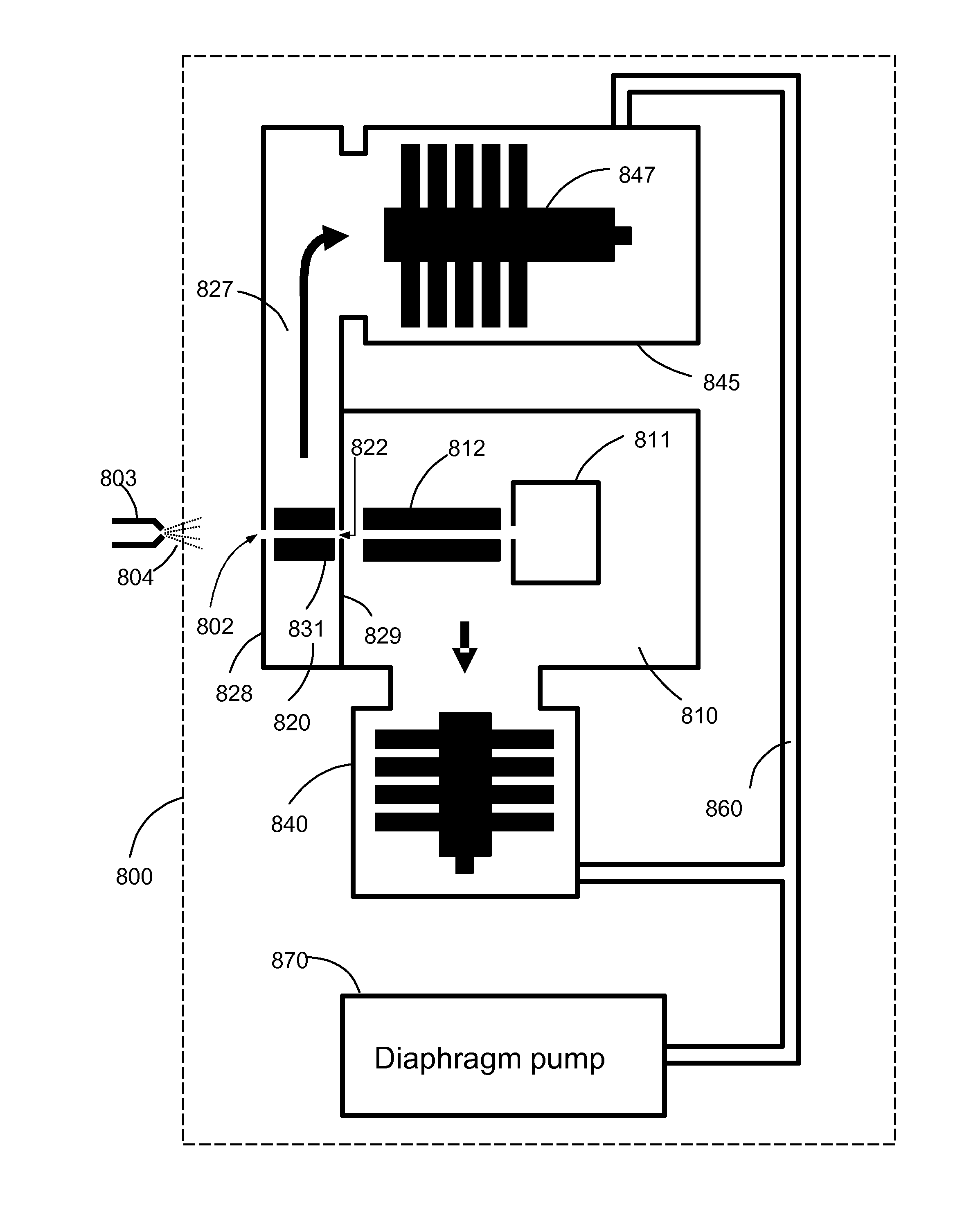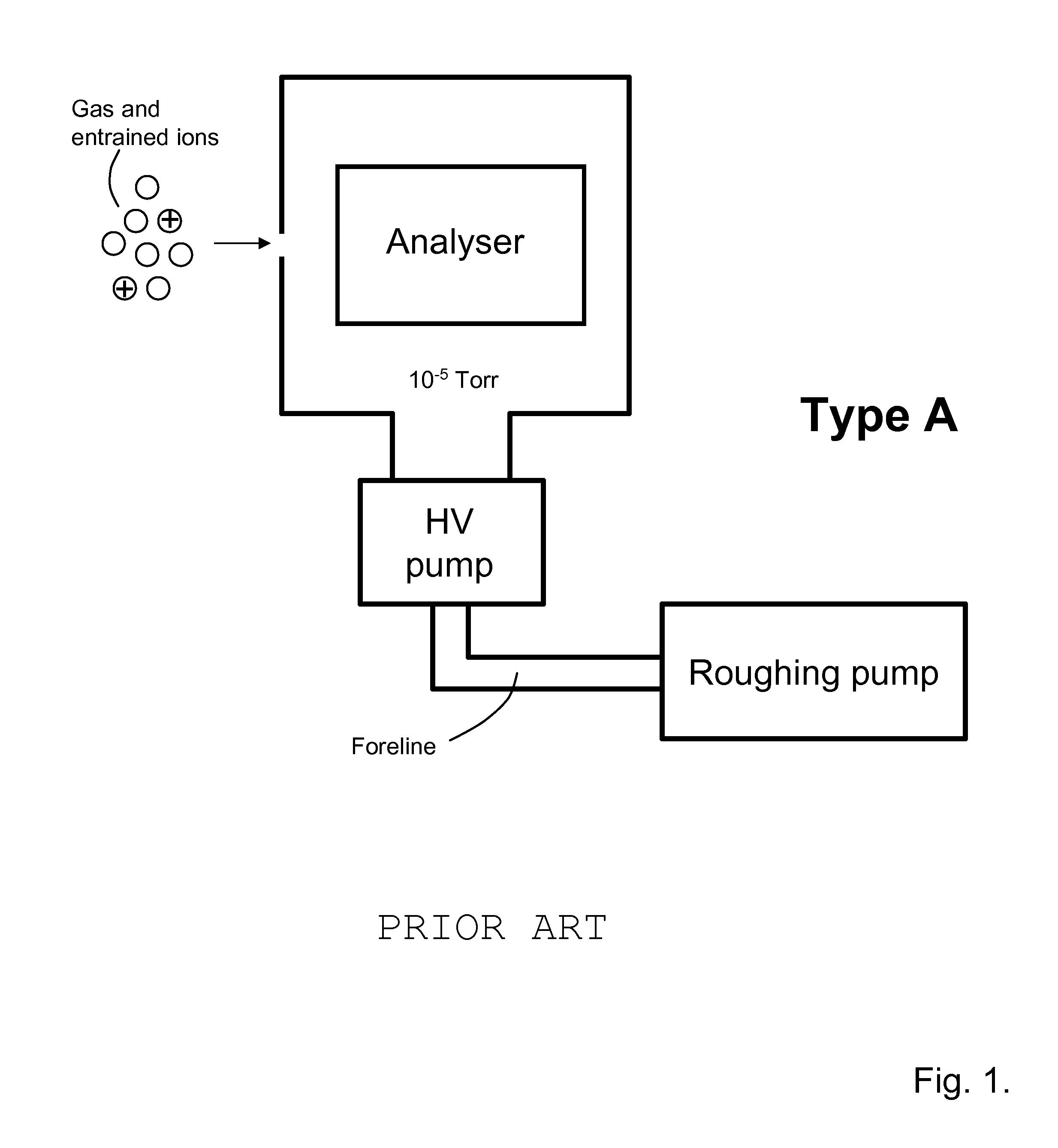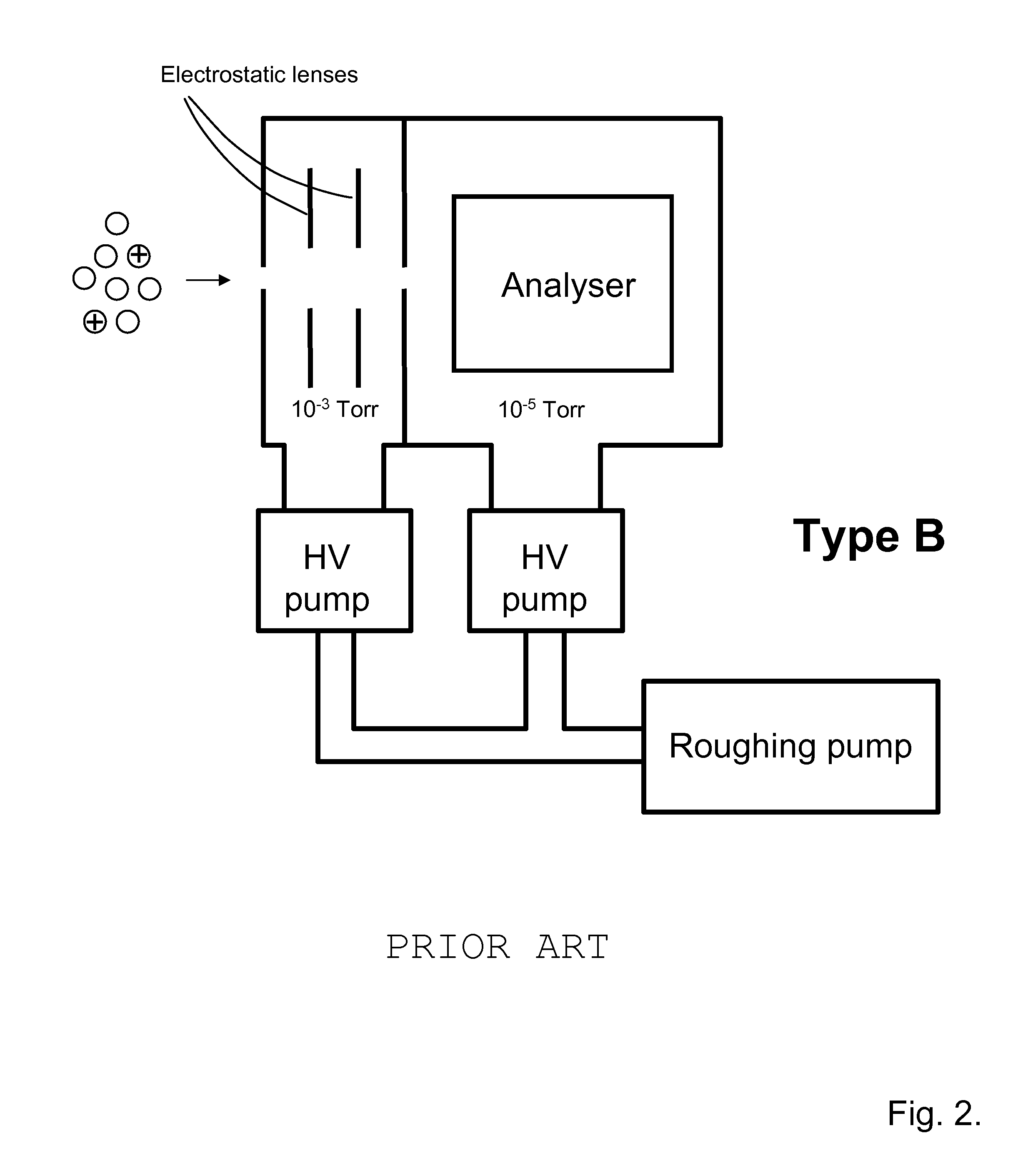Miniature mass spectrometer system
a mass spectrometer and miniature technology, applied in mass spectrometers, particle separator tubes, isotope separation, etc., can solve the problems of large cryopumps, large pumping speeds, and relatively high levels of heat and noise, so as to achieve the effect of substantially reducing the overall size and weight of the system
- Summary
- Abstract
- Description
- Claims
- Application Information
AI Technical Summary
Benefits of technology
Problems solved by technology
Method used
Image
Examples
Embodiment Construction
[0043]It will be appreciated by those of skill in the art that, for instruments of a conventional size, a Type D architecture is overwhelmingly more preferable than a Type E architecture. For modern instruments, a typical inlet flow is 600 standard cubic centimeters per minute (sccm), and a typical ion guide pressure is 8×10−3 Torr, so these parameters shall be adopted for the purposes of comparison. In Table (1), some characteristics of the turbomolecular pump needed to pump the chamber containing the ion guide, and the roughing pump required for the whole system are given. It has been assumed that the skimmer operates at 1 Torr and passes 10% of the gas load in the case of Type D, and that the foreline pressure required by a 950 L / s turbomolecular pump is 2 Torr in the case of Type E.
TABLE (1)Pump characteristics for Type D and Type E architectures when the inlet flow is 600 sccm.Type DType ESpeedDiameterWeightSpeedDiameterWeightHV pump95L / s110 mm3-4kg950L / s250 mm20-40kgRoughing p...
PUM
 Login to View More
Login to View More Abstract
Description
Claims
Application Information
 Login to View More
Login to View More - R&D
- Intellectual Property
- Life Sciences
- Materials
- Tech Scout
- Unparalleled Data Quality
- Higher Quality Content
- 60% Fewer Hallucinations
Browse by: Latest US Patents, China's latest patents, Technical Efficacy Thesaurus, Application Domain, Technology Topic, Popular Technical Reports.
© 2025 PatSnap. All rights reserved.Legal|Privacy policy|Modern Slavery Act Transparency Statement|Sitemap|About US| Contact US: help@patsnap.com



